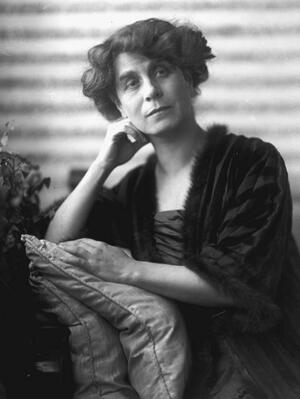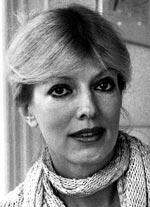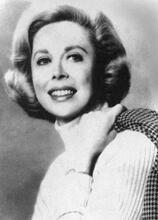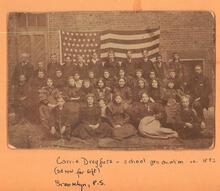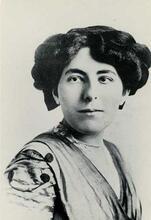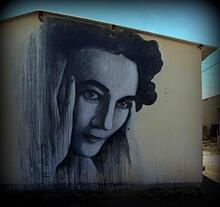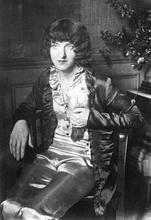Berta Zuckerkandl
Berta Zuckerkandl was a journalist, cultural critic and a famous Viennese salon hostess. From 1890 to 1940, she fought for the recognition of modern Austrian art, for a cultural and political dialogue between Austria and France, and for pressing humanist causes. Zuckerkandl played a central role in shaping Viennese modernism through her cultural networks and her articles. Her political engagements were directed towards confronting antisemitism in France and in Austria. During the 1920s and 1930s, Zuckerkandl continued to publish articles including interviews with international politicians. She promoted theater projects and translated plays by French dramatists into German. After the annexation of Austria to Nazi Germany she fled to France and later to Algeria.
Only few know the precious value of a discussion accompanying the spiritual vibration of the present. (Berta Zuckerkandl, 1899)
Aspiring to shape the cultural life of her time, Berta Zuckerkandl mastered public debate and social networking in her promotion of Viennese modernism and liberal politics in Austria. She was a journalist and cultural critic for the Wiener Allgemeine Zeitung and later for the Neue Wiener Journal. She was also hostess of a famous Viennese salon and for fifty years, from 1890 to 1940, fought for the recognition of modern Austrian art, for a cultural and political dialogue between Austria and France, and for pressing humanist causes.
Early Life and Family Network
The second daughter of five children, Berta Zuckerkandl was born on April 13, 1864, to Amalie née Schlesinger (1838–1912) and the newspaper tycoon Moritz Szeps (1834–1902), the founder and publisher of the Neues Wiener Tagblatt (1867-1886), Wiener Tagblatt (1886-1894), and Das Wissen für Alle (1900). Among the experts whom her father hired to tutor his daughters at home was the renowned art historian Albert Ilg (1847–1896), who favored Baroque art. Zuckerkandl grew up witnessing her father’s stormy career and political engagements. Moritz Szeps was a close advisor to the liberal Austrian Crown Prince Rudolf (1858–1889) and a supporter of an Austria-France alliance through his connections with liberal French politicians such as Léon Gambetta (1838–1882) and Georges Clemenceau (1841–1929). Clemenceau’s brother, Paul, married Szeps’s eldest daughter Sophie. Berta also became involved in political causes. Learning about the Dreyfus affair at her sister’s salon, Zuckerkandl supported the fight to recognize his innocence. During her visits to Paris, she became acquainted with famous artists such as Eugène Carrière (1849–1906) and Auguste Rodin (1840–1917).
Salon Hostess and Cultural Producer
The second daughter of five children, Berta Zuckerkandl was born on April 13, 1864, to Amalie née Schlesinger (1838–1912) and the newspaper tycoon Moritz Szeps (1834–1902), the founder and publisher of the Wiener Tagblatt. Among the experts whom her father hired to tutor his daughters at home was the renowned art historian Albert Ilg (1847–1896), who favored Baroque art. Zuckerkandl grew up witnessing her father’s stormy career and political engagements. Moritz Szeps was a close advisor to the liberal Austrian Crown Prince Rudolf (1858–1889) and a supporter of an Austria-France alliance through his connections with liberal French politicians such as Léon Gambetta (1838–1882) and Georges Clemenceau (1841–1929). Clemenceau’s brother, Paul, married Szeps’s eldest daughter Sophie. Berta also became involved in political causes. Learning about the Dreyfus affair at her sister’s salon, Zuckerkandl supported the fight to recognize his innocence. During her visits to Paris, she became acquainted with famous artists such as Eugène Carrière (1849–1906) and Auguste Rodin (1840–1917).
In 1886, Berta married Emil Zuckerkandl (1849–1910), a professor of anatomy. Emil earned worldwide reputation in the fields of topographic and comparative anatomy as well as morphology. In 1883, he discovered the Zuckerkandl's fascia (posterior renal fascia, connective tissue covering the kidney), named after him. He was a musician and collector of Asian art and loyal supporter of Berta’s engagements on behalf of contemporary art and cultural and feminist causes. They first lived in Graz, yet soon returned to Vienna. Their only son, Fritz (1895-1982), was born in 1895.
For Berta Zuckerkandl, the city of Vienna would become hers to form. Her cultural involvements would also give rise to her nickname “Hofrätin” (“councilor,” stemming from her being a councilor’s wife but symbolically attributing to her a similar position). In each of Zuckerkandl’s four Viennese addresses she opened a grand salon that directly influenced the cultural and, to a certain extent, political happenings: the first was in the 9th district, Günthergasse 1 (1889-1897), also known as the university district; the second address was nearby in the 9th, Alserbachstrasse 20 (1897-1903); the third address was at the outskirts of the city, in a villa in Nußwaldgasse 22 (1903-1914); and, later, after spending time in a sanatorium and residing temporarily in a pension, she moved to the Inner City, Oppolzergasse (1916-1938), to Palais Auspitz, whose owners were prominent Jewish patrons of Vienna’s Ringstrasse (street in the shape of a ring surrounding the inner city) and also close friends.
Among the guests in the early days of Zuckerkandl’s renowned salon were her husband’s colleague the neuropsychiatrist Richard Krafft-Ebing (1840–1902), the author and critic Hermann Bahr (1863–1934), the journalist, author, and cultural philosopher Egon Friedell (1878-1938), and the composers Johann Strauß the younger (1825–1899) and Gustav Mahler (1860–1911). Working with her colleagues Bahr and Ludwig Hevesi (1843–1910), Zuckerkandl raised the flag for modern Austrian art within a conservative and provincial cultural climate. She defended and promoted artists, especially Gustav Klimt (1862–1918), and architects Otto Wagner (1841–1918) and Josef Hoffmann (1870–1956), as well as the reputation of the Vienna Secession (modernist art association) and the Wiener Werkstätte (modernist Viennese design workshops). Zuckerkandl promoted modern design as part of constructing a progressive Austrian national identification. She further secured the first major contract for the Wiener Werkstätte, the design of the Purkersdorf Sanatorium, owned by her brother-in-law, the industrialist and art collector Viktor Zuckerkandl (1851-1927). Viktor and Paula Zuckerkandl, together with Adele and Ferdinand Bloch-Bauer, were among the most important collectors of Klimt’s paintings.
Berta’s salon became an important artistic center. She introduced to the Austrian public new personalities such as the German artist Käthe Kollwitz (1867–1945) and the French fashion designer Paul Poiret (1879–1944). She developed her own patriotic writing style, identifying her creative license as a woman writer as passionately subjective and enthusiastically one sided. She aimed to promote belief in the distinctiveness of Austrian culture and to inspire a noble modern art that would radiate from Austria and conquer global art culture (Wiener Allgemeine Zeitung, 1913). In 1905, Zuckerkandl provoked a sensation by publishing an interview with Klimt, who, in the name of the freedom of art, declared he would buy back the panels he had designed for the Viennese University’s ceiling, which the Austrian Ministry of Education had rejected and artist stated his independence from public commissions. In 1908, Zuckerkandl published a selected collection of her essays on contemporary art. Her vehement opponent, who challenged her central position as cultural producer of the Viennese avant-garde, was Karl Kraus (1874-1936), the journalist and editor of the journal Die Fackel (The Torch).
Cultural and Political Engagements in the First Austrian Republic
During WWI, despite a growing nationalist chauvinism, Zuckerkandl had the courage to reveal herself as a pacifist by publishing an open letter by young French authors calling for peace. At the same time, she published an appeal for a humanitarian commission for the suffering Jews in Galicia and demanded tolerance from the Viennese toward the flood of refugees, mainly Jews, from the eastern provinces. In 1917, Zuckerkandl utilized the close connections to French politicians she had established at her sister’s salon and, together with her brother Julius Szeps (1867–1924), the editor of the liberal newspaper Fremden-Blatt, strove for a separate peace between Austria and the Allies. She opposed Austria’s post-WWI movement for annexation to Germany and further promoted cultural exchange with France. After the war, recognized by both the Socialist and the Conservative parties as an unofficial Austrian diplomat, Zuckerkandl arranged informal contacts with French politicians. Through her French connections, her two major achievements were to facilitate the Hoover commission’s aid for ailing Austria after the war and, more than ten years later, in 1928, to persuade the Austrian Chancellor to review the case of Philipp Halsmann, a Jew from Riga visiting Tyrol with his father, who was falsely accused by a local antisemitic restaurant owner of killing his father. As a result of her and other prominent authors’, such as German Thomas Mann and Austrian Sigmund Freud, intervention, Halsmann was pardoned and freed from jail.
In Summer 1916, Zuckerkandl had moved to the inner city and begun the fourth and last round of her Viennese salons, hosting such famous authors as Arthur Schnitzler (1862–1931), Richard Beer-Hofmann (1866-1945), Franz Werfel (1890–1945), and Hugo von Hofmannsthal (1874–1929), composers Alban Berg (1885-1935) and Egon Wellesz (1885-1974), as well as leading Socialists and Conservatives such as Julius Tandler (1869–1936) and Ignaz Seipel (1876–1932). Modernist Josef Hoffmann, whom she had continually supported in her articles, designed her stylish apartment.
At the end of 1922 Zuckerkandl left the Wiener Allgemeine Zeitung and began publishing in the Neue Wiener Journal and, sporadically, also in the Wiener Tag, Volkszeitung, Bühne, and other journals. During the 1920s, she promoted the theater projects of Max Reinhardt (1873–1943) and Hugo von Hofmannsthal, especially at the Salzburg Festivals. In 1924, she published a series of interviews with politicians, including the British and the French prime ministers and finance ministers. Committed to an Austrian-French dialogue, she translated into German the plays of the French dramatists Paul Géraldy (1885–1983), Henri Lenormand (1882–1951), Jean Anouilh (1910–1987), Marcel Achard (1899–1974), and Jacques Bousquet (1883–1939) —work for which she was awarded the Order of the Legion of Honor.
During the 1920s and 30s, Zuckerkandl relied on her income as a journalist and translator. After the National Socialist takeover in Germany, and following growing financial hardships, she concluded her Sunday receptions in her salon in 1933. In the same year, through her close friendship with the Jewish jurist and financial expert Gottfried Kunwald (1869-1938), she established contact with conservative Austrian Chancellor Engelbert Dollfuss (1892-1934) in an attempt to mediate politically between Austria and France. In 1934, after the establishment of the Austro-Fascist government, Berta maintained contact with leading personalities in Austrian economic and political circles and occasionally received guests in her salon.
Zuckerkandl’s cultural and political engagements follow the tradition set by her father and her women predecessors, the Jewish salon women Fanny von Arnstein and Josephine von Wertheimstein, who were also involved in “background politics.” But for Berta Zuckerkandl the particular political moment in which she lived crystallized her purpose as a cultural influencer: it was clear to Berta that politics were integral to hers and her community’s survival strategy as outsiders in society. This recognition was articulated in a letter she wrote to her grandson Emil Zuckerkandl (who later changed his name to Emile, 1922-2013) in March 1937, with reference to the dangers of Austria being annexed to Nazi Germany; regarding the implications of this, she asked rhetorically, “What if you are a Jew”?
Legacy
Following the March 1938 annexation of Austria, Berta escaped to Paris, where her son Fritz had lived since 1935. In Paris she established her last salon, where her guests included the conductor Bruno Walter (1876–1962) and Alma and Franz Werfel. Together with other émigrés she worked for the liberation of Austria. Zuckerkandl’s memoirs were published in English, French, and German. Her film script on the “Tiger,” Georges Clémenceau, was published as a book in 1944. In spring 1940, she fled to Algeria, where her son was waiting for her. After the liberation of Algeria at the end of 1942, she worked in the Austrian section of a radio station established by the Allies. In September 1945, she returned, sick, to Paris, where she died on October 16, 1945.
As has been noted in recent years in publications dedicated to Berta Zuckerkandl (mostly by Austrian historians and curators), it took decades before Zuckerkandl’s leading role in shaping Viennese modernism was acknowledged. At the same time, the restitution of her property to her relatives, specifically her grandson, the late Emile Zuckerkandl, remains problematic even today. This property included items from the Purkersdorf Sanatorium and furniture and art collections, such as the Klimt paintings “Apple Tree” and “Poppy Meadow.” Nonetheless, recent art, design, and literature exhibitions in several museums have finally granted Berta Zuckerkandl her due honors, including those at the Literature Museum of the Austrian National Library, the Imperial Furniture Collection Museum, and the Wien Museum on the occasion of the 100th anniversary of Republic Austria in 2018.
Selected Works by Berta Zuckerkandl
“Cultureller Dilettanitismus,” [Cultural Dilettantism]. In Dokumente der Frauen, July 15, 1899.
“Decorative Kunst und Kunstgewerbe.” In Die Pflege der Kunst in Oesterreich 1848–1898. Vienna: 1900 (Published together with: Ludwig Hevesi [Fine Arts], Felix Salten [Theater], Robert Hirschfeld [Music]).
Zeitkunst 1901–1907. Vienna: 1908.
“Hermann Bahr.” Wiener Allgemeine Zeitung, July 16, 1913, 2-4.
Federmann, Reinhard, ed. Österreich intim. Erinnerungen. Frankfurt, Berlin, Vienna: Propyläen, 1970; reprinted as Federmann, Reinhard, ed. Zuckerkandl, Berta, Österreich intim. Erinnerungen. Vienna: Amalthea Signum, 2013.
Ich erlebte fünfzig Jahre Weltgeschichte. Stockholm: Bermann-Fischer, 1939.
Zuckerkandl-Szeps, Bertha. My Life and History. Translated from the German by John Sommerfield. New York: Cassell and Co.,1939.
Zuckerkandl-Szeps, Bertha. Souvenirs d’un monde disparu, Autriche 1878-1938. Translated by Maurice Rémon. Paris: Calman Lévy, 1939.
Zuckerkandl-Szeps, Berta. Clemenceau, tel que je l’ai connu. Algiers: Éditions de la revue Fontaine, 1944.
Beller, Steven. “Dis-Oriented Jews? Orientalism, Assimilation, and Modernism in Vienna 1900.” In Design Dialogue: Jews, Culture and Viennese Modernism, edited by Elana Shapira. Vienna: Böhlau Verlag, 2018.
Braun, Emily. “Ornament as Evolution. Gustav Klimt and Berta Zuckerkandl,” In Gustav Klimt. The Ronald S. Lauder Collection and Serge Sabarsky Collections, edited by Renée Price, 144-169. New York: Neue Galerie, 2007.
Enderle-Burcel, Gertrude. Berta Zuckerkandl – Gottfried Kunwald Briefwechsel 1928-1938. Vienna: Böhlau Verlag, 2018.
Meysels, Lucian O. In meinem Salon ist Österreich, Berta Zuckerkandl und ihre Zeit. Vienna, Munich: Illustrierte Neue Welt, 1984.
Fetz, Bernhard. Katharina Mnojlovic, and Kerstin Putz. Berg, Wittgenstein, Zuckerkandl: Zentralfiguren der Wiener Moderne. Vienna: Paul Zsolnay Verlag, 2018.
Eder, Franz and Ruth Pleyer, “Berta Zuckerkandls Salons – Adressen und Gäste.” In Fetz, Bernhard, Katharina Mnojlovic, and Kerstin Putz. Berg, Wittgenstein, Zuckerkandl: Zentralfiguren der Wiener Moderne. Vienna: Paul Zsolnay Verlag, 2018.
Klugsberger, Theresia. Berta Zuckerkandl, Flucht!: von Bourges nach Algier im Sommer 1940, Wien: Czernin, 2013.
Redl, Renate. “Berta Zuckerkandl und die Wiener Gesellschaft. Ein Beitrag zur österr. Kunst- und Gesellschaftskritik.” PhD. diss., Vienna University, 1978.
Schulte, Michael. Berta Zuckerkandl, Salonière, Journalistin, Geheimdiplomatin. Zürich: Atrium, 2006.
Shapira, Elana. “Die kulturellen Netzwerke der Wiener Moderne: Loos, Hoffmann und ihre Klienten.” In Wagner, Hoffmann, Loos und das Möbeldesign der Wiener Moderne. Künstler, Auftraggeber, Produzenten, edited by Eva Ottillinger. Vienna: Hofmobiliendepot Möbel Museum, 2018.
Shapira, Elana. Style and Seduction Jewish Patrons, Architecture, and Design in Fin-de-siècle Vienna. Waltham, MA: Brandeis University Press, 2016.
Steinhäusl, Ulrike. “Berta Zuckerkandl – ‘Hebamme der Wiener Moderne.” In Apropos Avantgarde, edited by Dolors Sebaté Planes and Jaime Feijóo. Berlin: Frank & Timme,
2011.
Wagener, Mary L. “Berta Zuckerkandl: Viennese journalist and publicist of modern art and culture.” European History Quarterly 12 (1982).
Zuckerkandl, Emil. Atlas der topographischen Anatomie des Menschen. Vienna: Wilhelm Braumüller, 1881-1882.

